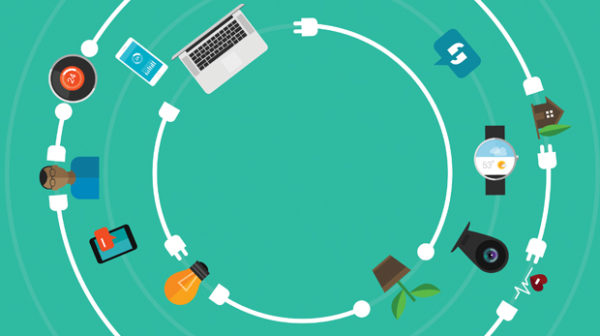The ‘Internet of Things’ is Changing Our Daily Lives
by BusinessWoman magazine / 0 Comments / 160 View / September 1, 2019
Ask people what the Internet of Things is and the most common response will be a puzzled look.
While the general public is typically unaware of the Internet of Things, it is expected to revolutionize how we interact with technology, transform our daily lives, and alter how businesses operate in the near future.
What is the Internet of Things?
It is the interconnection via the internet of computing devices embedded in everyday objects, enabling them to send and receive data.
Kevin Ashton, digital innovation expert, says the Internet of Things has made the physical world one enormous information system.
“Smart devices can be found in every facet of our lives,” says Marissa Olsen, a cybersecurity expert and attorney with Coalition, a technology-based cyber insurance carrier for businesses.
“Smart watches, fitness trackers, coffeemakers, thermostats, and home-security cameras are devices that have become part of our everyday lives. We are accustomed to tracking these devices, often with our smartphones,” she says.
Smart homes, where any device in your home that uses electricity can be put on your home network and at your command, are becoming more common. You can give commands via voice, remote control, tablet, or smartphone. Most applications relate to lighting, home security, home theater and entertainment, and thermostat regulation.
Seventy percent of people who purchased their first smart-home device believe they are more likely to purchase more, according to a Smart Home Technology Survey.
The use of smart devices is exploding in the business and manufacturing sectors. Hospitals are using wireless devices, which can be implanted or worn, to track blood pressure and heart rates of patients. Farmers use smart devices to keep track of their livestock and how much feed is in their silos.
Manufacturers use wireless devices to save money. Their biggest problem is human error. The more automation they have, the fewer errors they have. It also increases their productivity.
While the Internet of Things has experienced steady growth in the past, skyrocketing growth is predicted for the next several years.
Predictions are that there will be as many as 50 billion connected devices by 2020. Wearable technology, which includes smart watches and fitness trackers, is expected to grow to 411 million by 2020. And, it’s estimated that 82% of cars will be connected to the internet by 2021.
“The technological advances the past five years have been amazing,” says Olsen. “What was available five years ago, in regards to smart devices, pales in comparison to what’s on the market today.”
The Internet of Things’ explosive growth has been accompanied by an increasing concern about security.
“There’s a question of whether or not the security has kept pace with the technology,” points out Olsen.
With so many devices connected to the internet — and those devices now interconnected — security concerns are heightened. When you are connected to everything, there are more ways to access your information.
Since personal information — such as your name, age, health data, location, and more — is stored in these devices, they are prime targets for criminals.
“Many of these devices are probably unencrypted and easy to hack into,” says Olsen. “You don’t have to be a sophisticated hacker to access their devices.”
Olsen says hackers can hack into one device, perhaps your home-security camera, and then access your other devices, such as your computer and email. Then they can obtain access to your banking information, healthcare data, and more.
Businesses also have to be worried about having their information compromised. Hackers can get through via a wireless device and end up shutting down the business. This can cost the company millions of dollars and lead to expensive insurance claims.
Olsen says individuals and businesses should take steps to increase the security of their information.
“I strongly recommend people educate themselves about security issues,” she stresses. “When considering the purchase of a wireless device, they should go online and research the different safety features. I believe you should purchase the device with the best safety features; it will probably cost more, but you get what you pay for.”
Olsen also suggests installing reputable internet security software on your computer, tablet, and smartphone. And, you should use strong and unique passwords for device accounts. She cautions against connecting all of your devices. She says you should limit sharing of information among various devices.
If you are creating a smart-home environment, Olsen suggests you engage security experts and adopt a dual authentication process, which requires a password and then a code.
Businesses have a lot at stake if they are victims of a cyberattack. Olsen says all businesses have an obligation to be proactive for their clients and themselves in regards to cybersecurity.
Besides evaluating their own systems and risks, Olsen says businesses should consider engaging an outside company to conduct some sort of a review of their system. The company can conduct penetration tests and run diagnostics on the system.
Olsen also recommends that companies of all sizes have insurance against cyberattacks.
“Besides peace of mind, a cybersecurity insurance policy can provide business services and tools to help prevent a cyberattack and assist the attacked business at the time of the breach and in the aftermath,” she says.


Your Commment
You must be logged in to post a comment.